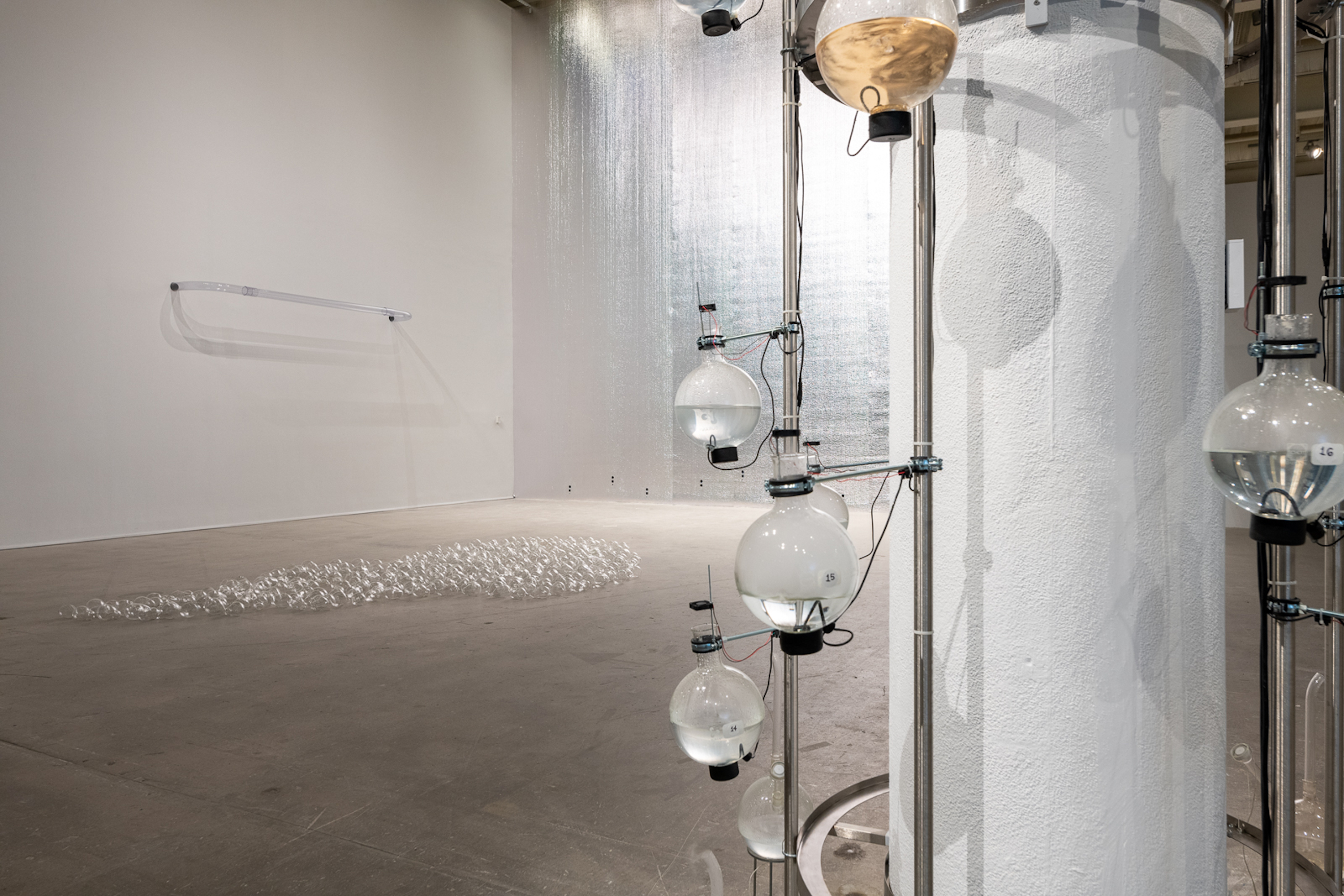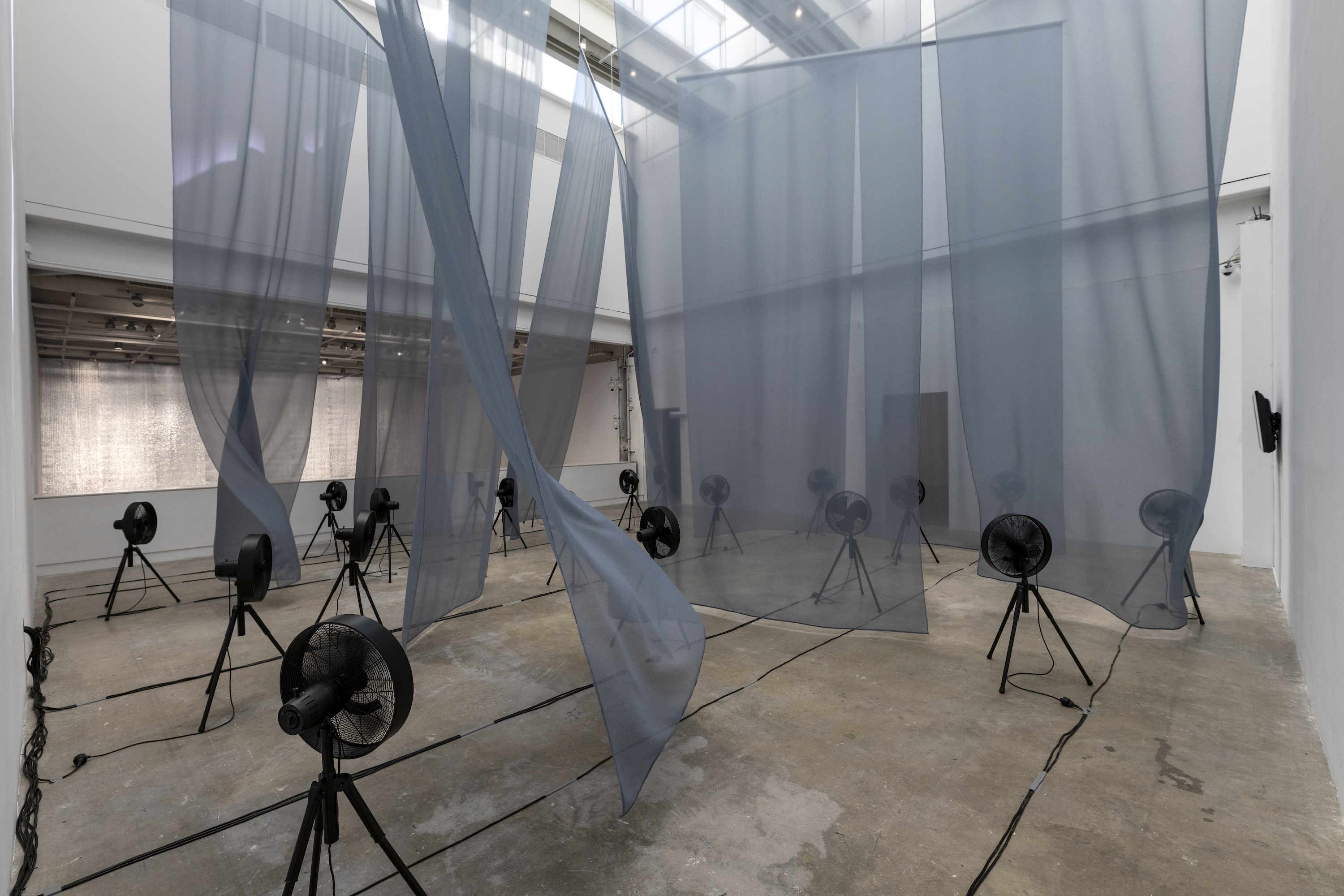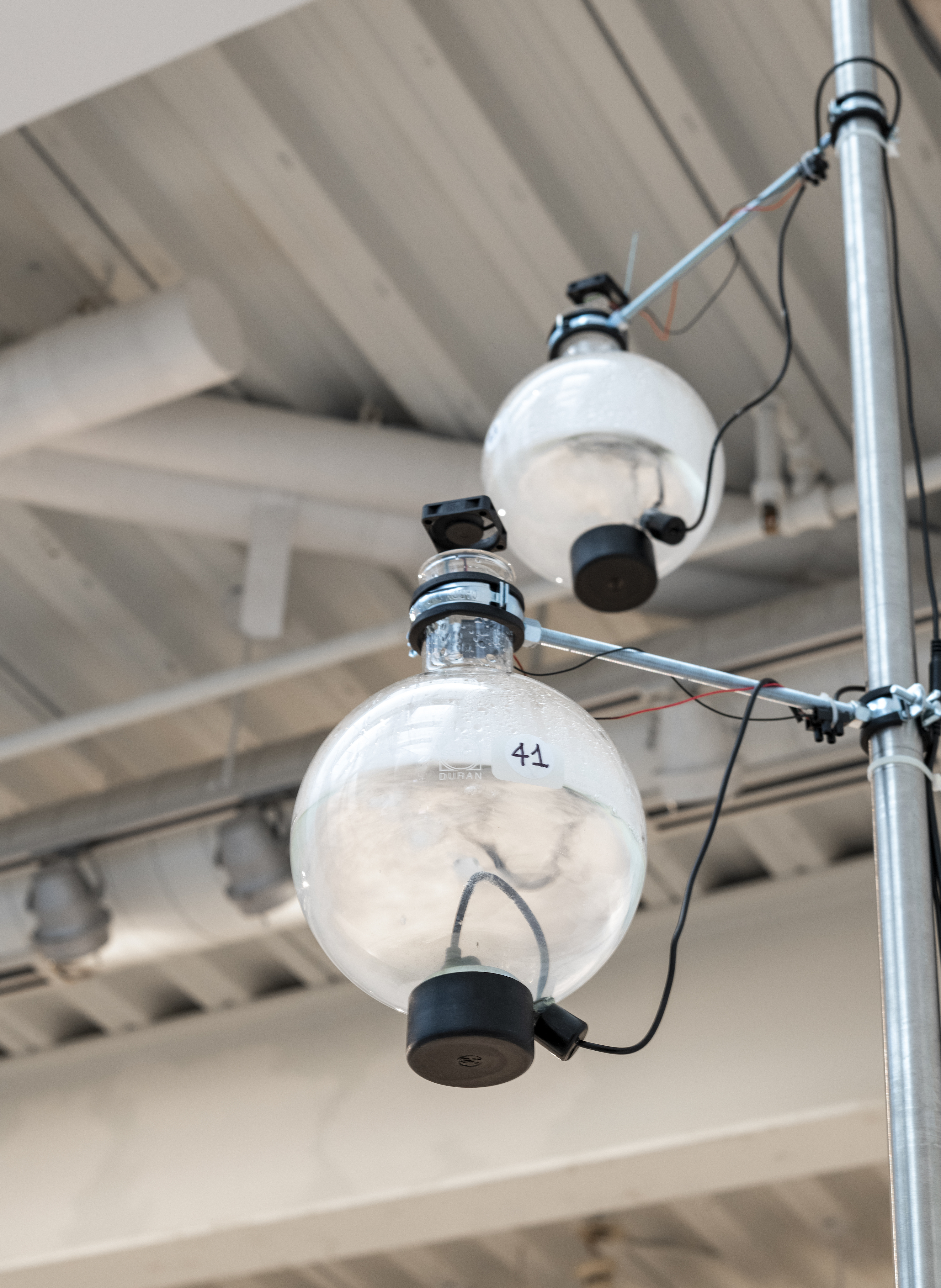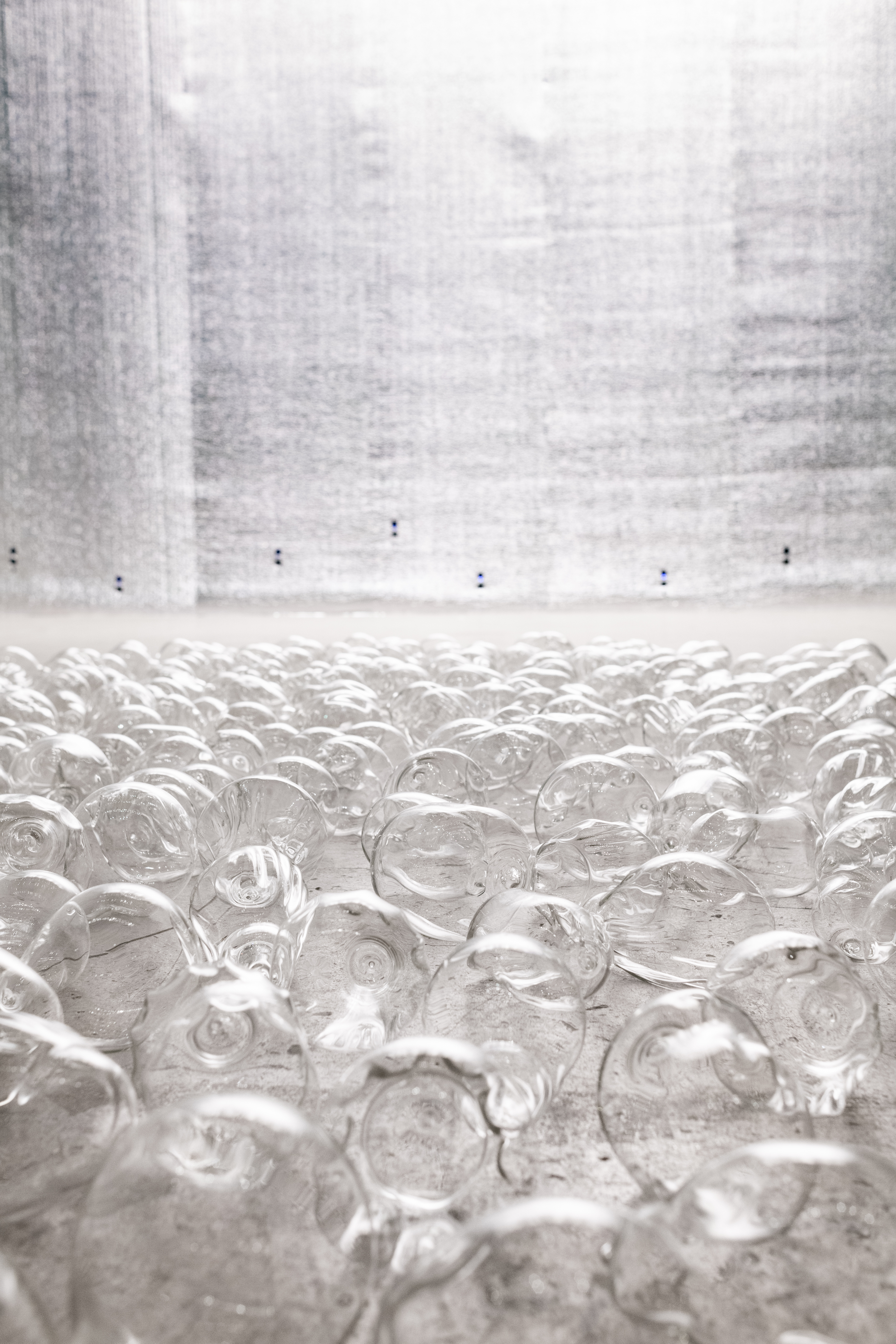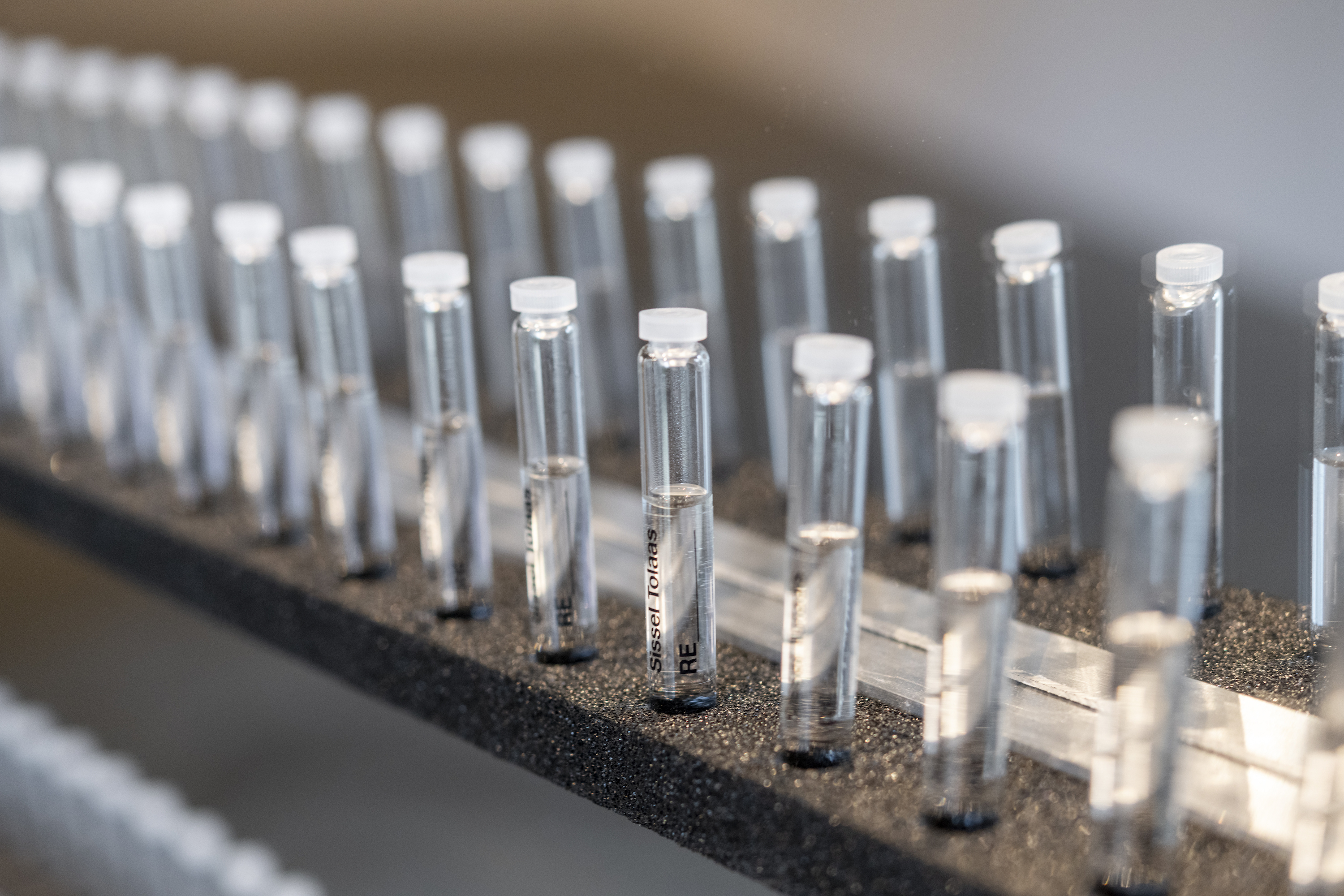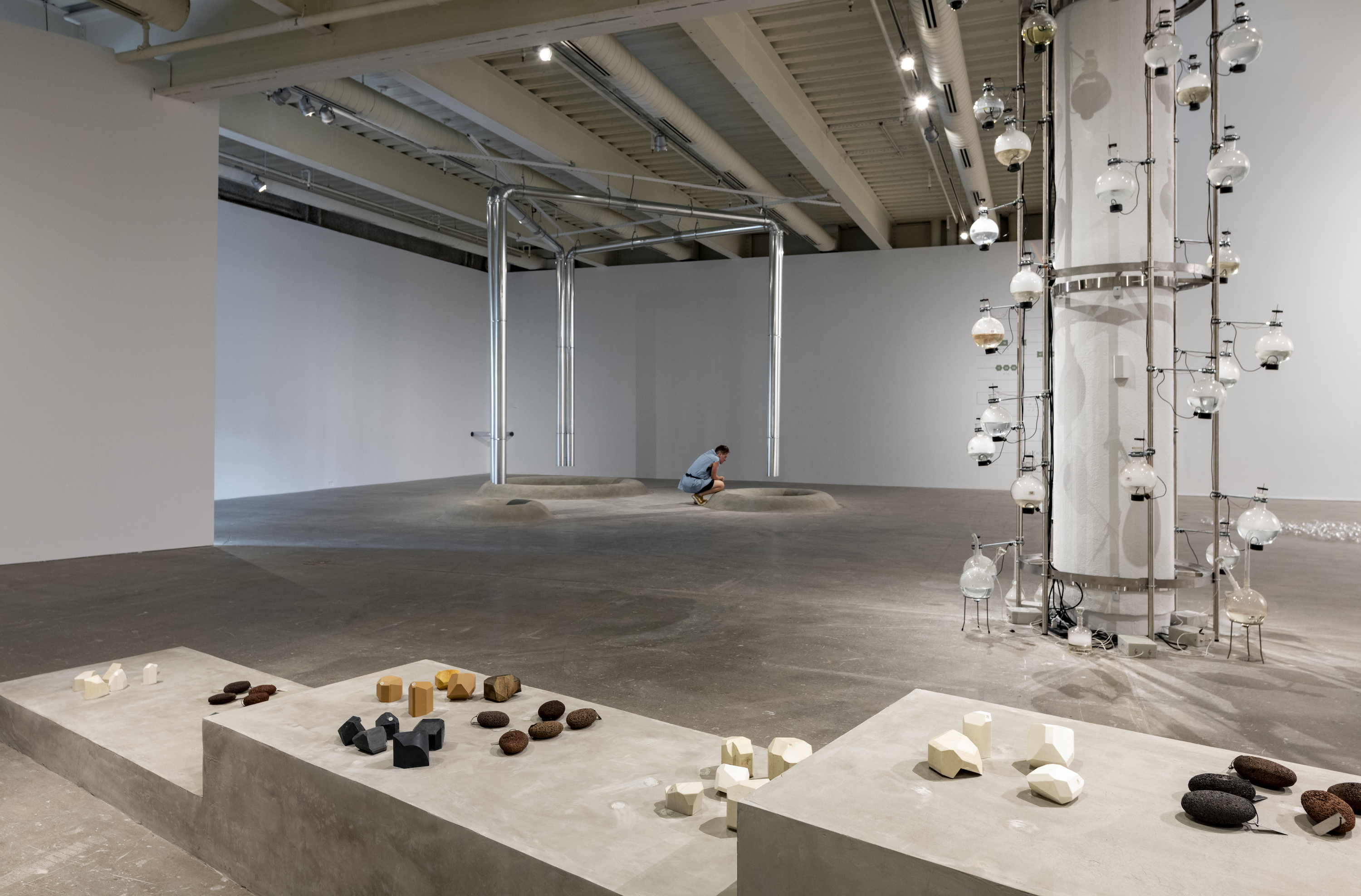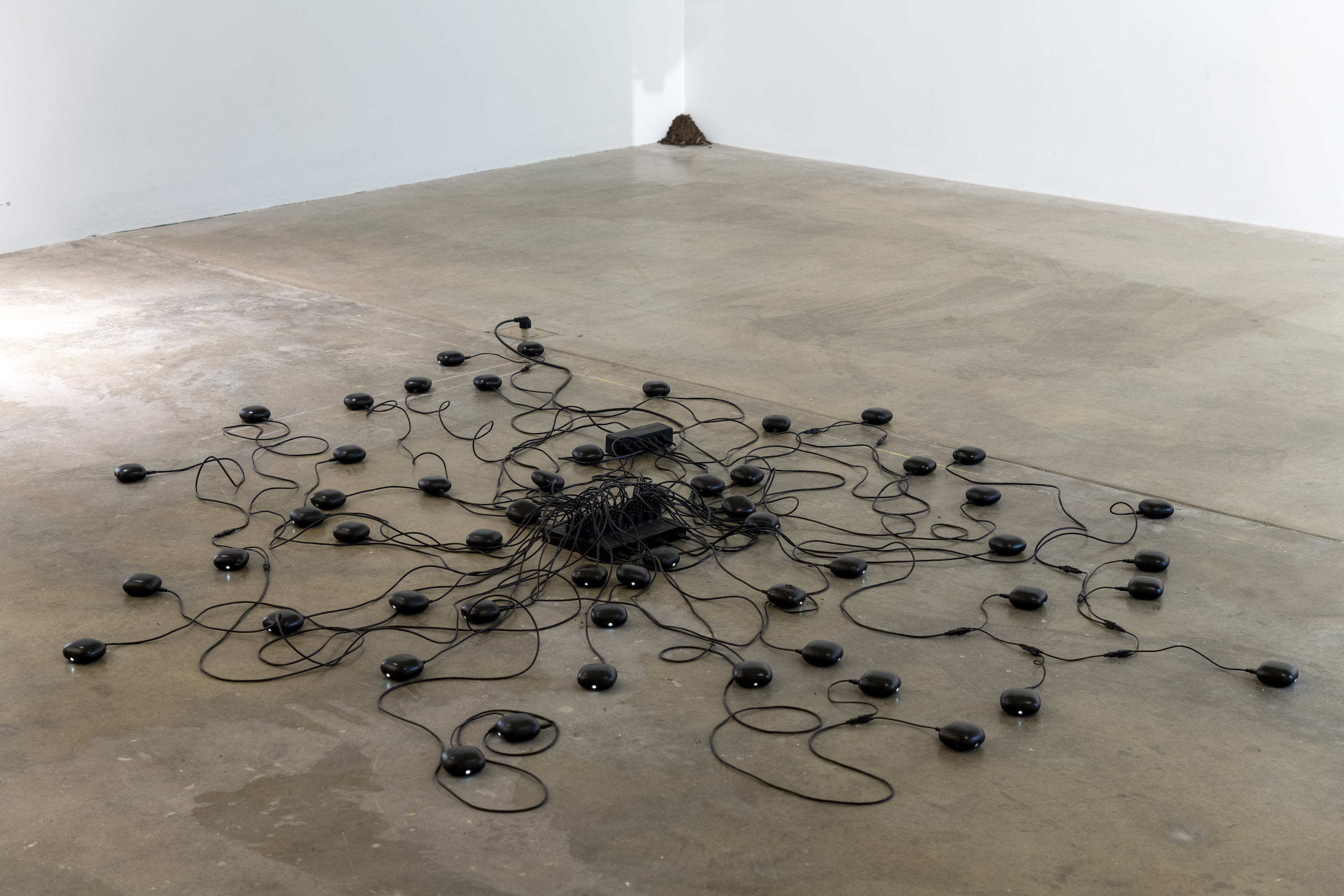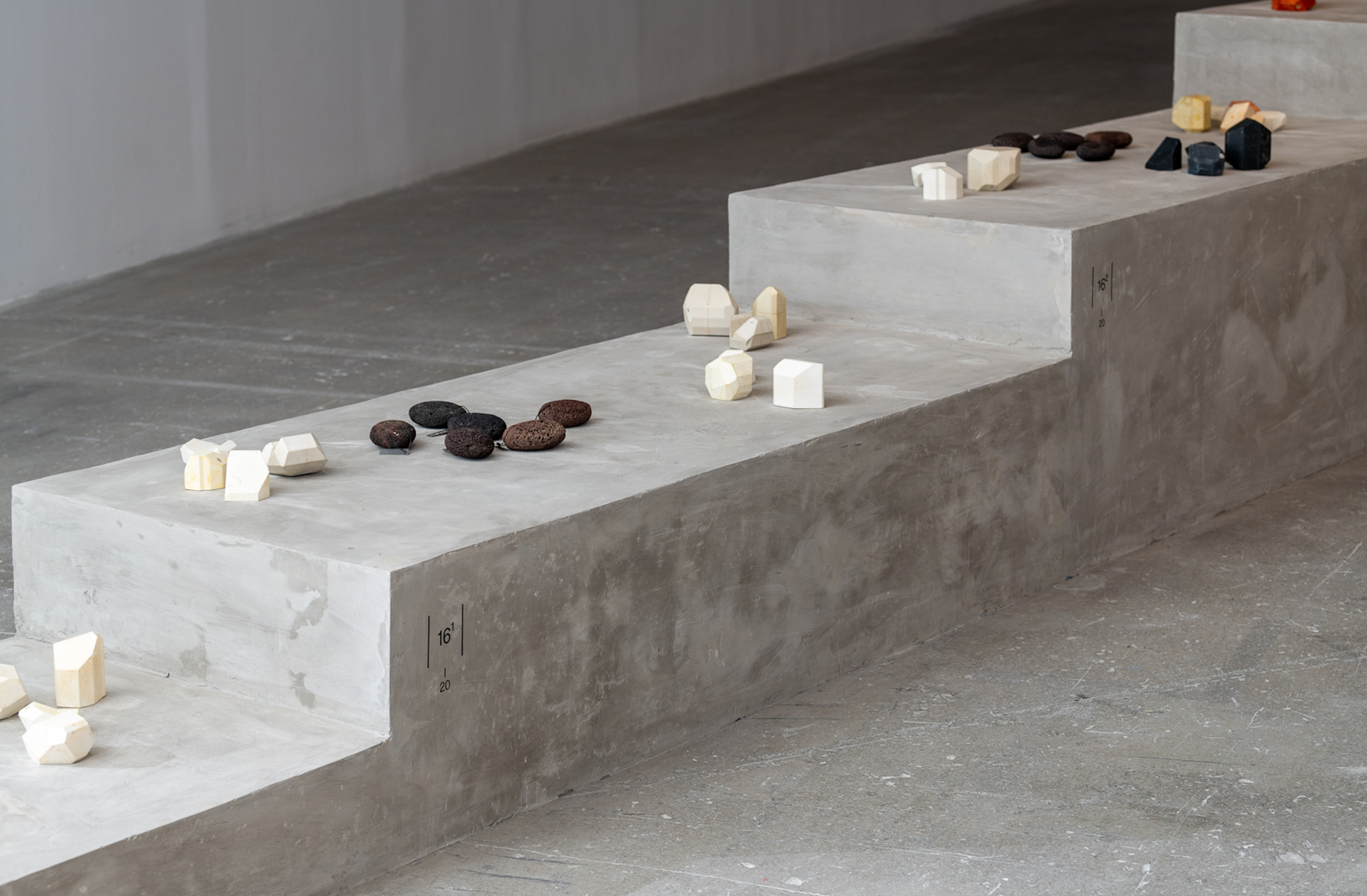September 16–December 30, 2022
A visit to Sissel Tolaas’s “RE_________” is unnerving, exciting, and, ultimately, strangely liberating. Countering the deodorization of social and cultural life, in the West especially, Berlin-based Tolaas has for three decades worked to remind us of the importance of smell in how we experience and understand ourselves, in our relationships to others and to our environments. She first records and deconstructs real-world smells into their molecular components, then synthesizes and represents them as olfactory artworks, demonstrating how smell remains a vital carrier of information and mode of communication. Airborne and inseparable from breath, our awareness of smell has been, inadvertently, heightened during the COVID-19 pandemic. To properly experience Tolaas’s exhibition means ignoring the invisible, omnipresent, aerosolized threat of contagion that has haunted public life of late and shedding our masks to inhale fully, freely, openly, again and again, as we touch, scratch, sniff, and lather up with objects and surfaces previously handled by strangers.
Dubbing herself an “inbetweener,” Tolaas, who has a background in art, linguistics, and organic chemistry, shrewdly plays the affective and visceral punch of smell and the objectivity and empiricism of scientific method against each other. Her artificial reconstructions remain mimetic, ultimately unable to traverse a sort of olfactory uncanny valley. This gap in fidelity is useful given how viscerally smells can evoke emotion and memory; it keeps sentimentality and nostalgia in check. Tolaas also strategically subverts the visuality and textuality expected from the exhibition format. Explanatory descriptions, authored by the artist in a style somewhere between concrete poetry and scientific abstract (replete with keywords/phrases), are only provided in the exhibition’s final room. Our primary guide is a cryptic, frustratingly obtuse, flowchart of shapes and numbers, which ensures that our primary encounters with the “situations” she constructs remain through the nose.
A play on the financial concept of liquidity, Liquid Money_ (Ampoules) (2000, 2004, 2021, 2022) distills the smell of a few hundred thousand dollars into a perfume, presented as a display of tiny glass vials arranged neatly in rows on mirror-backed shelves. Your price of admission gets you a free sample on your way out, allowing you to anoint yourself with an air of wealth at your leisure. Nearby, vah-NIHL-uhhhhh (2022) showcases vanillin, the most popular smell and taste in the world, owing to its presence in breast milk. Burrowing into and out of walls, systems of clear plastic tubing—the sort used in banks and libraries for interdepartmental communication—and HVAC-style aluminum ducts connect the different galleries, spreading each of these smells throughout the building. By creating links through notions of circulation, desire, and value, Tolaas points to how vanilla’s primal and almost subconscious association with comfort and care has been monetized for profit.
Tolaas approaches buildings as living, breathing organisms. If the tubes are a respiratory or circulation system of sorts, OUTsideINsideOUT (2005–2021) reveals the building’s innards, plastering the soaring wall in the ICA’s main ground floor gallery (and another in the mezzanine above the lobby) with foil insulation. These shiny surfaces serve as backgrounds for a pair of works that reassert smelling as an embodied act. Embedded at varying heights in the first wall, forcing people to bend and squat to reach them, a series of diffusers are each paired with a spy camera in SMELLY’s_Dark_Secret_22 (2022). Their live-feeds play on a similarly arranged sequence of screens in a gallery on the floor above, surreptitiously showing our facial responses to somewhat unpleasant odors. Elsewhere, Para_EI_EQ_IQ_EQ_ (2021) takes an aural approach, recording and replaying people’s vocal reactions to particular smells. These paralinguistic sounds suggest a possible alternate lexicon through which we might communicate about smell, a sense whose effects often elude language.
Unlike sight and hearing, which are exercised from a distance, and whose stimuli are physical rather than chemical, the sense of smell is, as literary scholar Hsuan L. Hsu argues, “trans-corporeal,” penetrating our bodies and connecting them, materially, viscerally, to the environments they inhabit.1 This makes them, Hsu asserts, particularly adept at sensing risk, especially in relation to the environment. AirREborn BelowAbove (1994, 1998, 2000, 2007, 2018, 2019, 2021, 2022) uses real-time weather data and fans supposedly embedded with smell molecules recorded on the North Sea to recreate the winds off Norway’s Northwestern coast. I spent some time sniffing around among the diaphanous gray curtains, trying to catch the polluting stink of the oil industry. SYMBIOTIC AGREEMENT AL_earth_22 (2019, 2021, 2022), a set of bubbling liquid-filled round bottom flasks studding a tall column, and D_earth (2022), a dense tangle of diffusers and cables on the floor, both simulated complex and sophisticated chemical communication networks found in nature which, though undetectable by humans, are deeply threatened by their actions.
This trans-corporeality makes smell both intimate and relational, a mode through which we negotiate between self and other. Fear 21/21 (2002) represented the molecular profile of sweat produced by anxious and paranoid men as a scratch-and-sniff paint coating an exterior wall and an internal stairway. Leaning in to experience it felt a bit naughty, but the smell was surprisingly sweet, with just the slightest hint of the acridity I expected. In the museum bathrooms, bars of soap bearing both Tolaas’s name (extruded from the surface) and her own unique smell presented an opportunity to get intimate with a stranger in a way we usually only do with a lover, parent, or child. If you indulge, you leave carrying a trace of her with you. Filled with codes and ciphers, and moments of magic and mystery, Tolaas’s exhibition is, in a sense, a call to conspire—a word formed by the combination of the Latin for “together” and “breathe”—to share air with strangers again, to revel in their wondrous proximities.
Hsuan L. Hsu, The Smell of Risk: Environmental Disparities and Olfactory Aesthetics (New York: NYU Press, 2020), 10.
